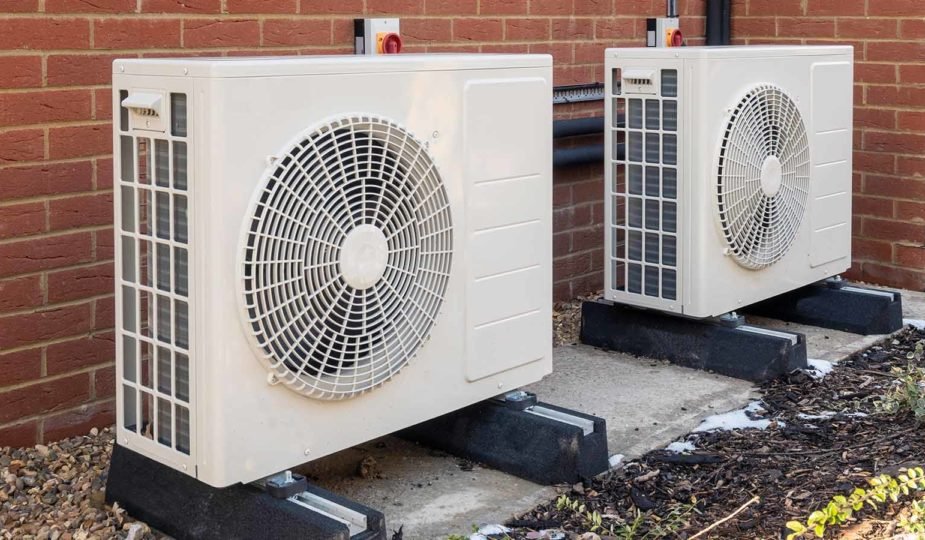
What is the Heat Pump’s Lowest Functional Temperature?
As winter approaches and temperatures start to drop, it’s important to understand all the details of your heat pump system. One particularly important aspect is understanding what temperature your heat pump begins functioning at, which then leads you to selecting the right type and size that will work for your home or business.
In this blog post, we’ll look at how a heat pump works in relation to temperature so you can decide what’s suitable for keeping your space warm through even the coldest days ahead.
For information on how heat pumps work in the winter, click here.
What is a heat pump?
A heat pump is an energy-efficient heating and cooling system that helps regulate the temperature of a building or home.
This type of system works differently from more traditional forms of heating, such as gas furnaces, in that it transfers rather than generates heat. Heat pumps are usually powered by electricity and use refrigerant to deliver warm air during winter and cool air during summer.
The efficiency of a heat pump is determined by its temperature differential, which is the difference between the temperature of the outdoor environment and the indoor environment that it needs to maintain. The lower this differential, the more efficient your heat pump will be.

How heat pumps work
Heat pumps work by transferring heat energy from one area to another. In a traditional system, the heat is generated inside the home and then circulated using fans or ducts.
With a heat pump, however, the process occurs in reverse – the unit extracts warm air from outside and brings it into your space. This makes them more efficient than traditional heating systems, as there is no need to generate heat from scratch.
When the outdoor temperature is too low for the heat pump to transfer enough energy into your space, it will shut off and switch to a backup system. This is why it’s important to understand what temperature your heat pump begins functioning at, as this will decide whether or not you need an additional heating system.
The three main types of heat pumps
There are three main types of heat pumps are the following:
- Air-source heat pumps
- Water-source heat pumps
- Geothermal heat pumps
Air-source and water-source heat pumps extract warm air from the environment to bring into your space, while geothermal systems take advantage of the constant temperature underground for their energy source.
Air-source heat pumps are the most common type, and are often used with a traditional furnace for colder climates. These work best when temperatures are above 40 degrees Fahrenheit (4.4 degrees Celsius), but some models can operate down to 0 degrees Fahrenheit (-17.7 degrees Celsius).
Water-source heat pumps use water from a pond or lake as their energy source, making them a great option for locations with plenty of accessible water. These types tend to be more efficient than air-source, and can operate at temperatures as low as 20 degrees Fahrenheit (-6.6 degrees Celsius).
Geothermal heat pumps take advantage of the constant temperature below ground level. The temperatures range from 50-60 degrees Fahrenheit (10-15.5 degrees Celsius), which is why these systems can operate at much lower temperatures than air-source and water-source heat pumps.
When choosing the right heat pump for your space, it’s important to keep in mind the lowest temperature that the system will be able to handle. This will help you select a model that is suitable for both your climate and your budget.
The lowest functional temperature for a heat pump
The lowest functional temperature for a heat pump varies depending on the model and make of the unit.
Generally, most models have a lower limit between -15°C to -20°C, although some brands may be able to perform even in colder temperatures. It is important to note that this temperature refers only to the outside air temperature – when the temperature in the space itself drops below this point, additional heating will be required.
It’s also important to consider the temperature of your local climate when selecting a heat pump system. If you live in an area with very cold winters, you need to make sure that your unit is powerful enough to keep up with the demands of colder temperatures.
A unit that is too small will struggle to keep up with the demands of extreme cold and could result in higher energy bills as it attempts to stabilize the climate.
If you’re unsure of what temperature your heat pump needs to begin functioning at, it’s best to consult a professional installer who can assess your home or building and recommend the best system for your needs. This will ensure that you get the most out of your heat pump, and that it keeps your space warm and comfortable even on the chilliest winter days.

Conclusion
In conclusion, it is important to keep in mind the lowest functional temperature for a heat pump when selecting the right system for your space.
Different brands and models of heat pumps have varying lower limits, so it’s best to consult with a professional who can assess your home or building and recommend the most suitable unit for you. This will help ensure that you get the most out of your heat pump and that it is able to keep up with the demands of colder temperatures.
With the right system in place, you can enjoy a warm and comfortable space even during the coldest winter days.









